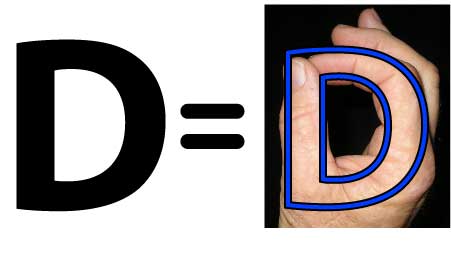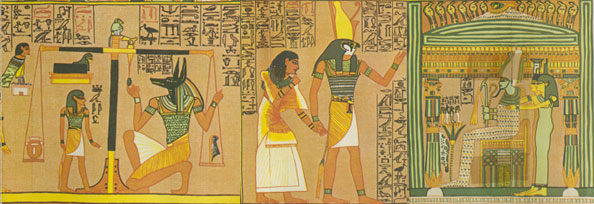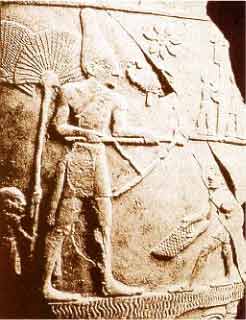Alphabet D ©

The Roman alphabet is pictographic. The letters of the alphabet are a set of religious symbols derived from Egyptian religion.
(The Roman alphabet is not derived from Egyptian hieroglyphics.)
The letters are pictures of Egyptian religious icons derived from the legend of Isis and Assur(Osiris).

Isis resurrected Assur(Osiris) from the dead.
The resurrection of Assur was the foundation legend of Egypt. The legend of Assur was a verbal record of their ancient history as they knew it. They had no written records; their histories were legends handed down from earlier times. The lives and deeds of the characters were exaggerated and embellished to make them larger than life, but there were real people behind the legends. According to the foundation legend, Assur was the first king of the first kingdom on earth. The evil god Seth and a company of conspirators murdered Assur. They hacked his body into pieces and scattered his severed parts afar. Isis collected the scattered parts of Assur, put them back together, and resurrected Assur from the dead.
The severed parts of Assur are now letters of the alphabet.

At least 13 of the letters of the Roman alphabet are visible in just this segment of the classical Judgment Scene.
The large (majuscule) letter "G" represents the head of Assur, the "O" is his eye, the "J" is his beard, The "L" is his leg, and so forth. The letter D represents the hand of Assur.
The (minuscule) letter d is a picture of an agricultural implement.

 The (minuscule) letter d is a picture of an agricultural implement. It is a hoe. The minuscule d looks like a hoe of the modern type. However, hoes of that type didn't exist at Assur's time.
The (minuscule) letter d is a picture of an agricultural implement. It is a hoe. The minuscule d looks like a hoe of the modern type. However, hoes of that type didn't exist at Assur's time.
The king pictured here is holding a hoe of the ancient kind. This king is participating in a ceremonial event in which he is wearing the crown of Assur. This may be a religious ceremony honoring Assur as the original farmer. The king may be opening a canal. It could be groundbreaking ceremony for a new project. In any case he is using a hoe of the primitive kind.
 In the alphabet, the majuscule letters are heaven symbols; the minuscule letters are earth symbols. In many cases the sounds of the letters are derived from the earth symbol. Such is the case with letter d. The sound of d is the thudding sound of the hoe striking the earth.
In the alphabet, the majuscule letters are heaven symbols; the minuscule letters are earth symbols. In many cases the sounds of the letters are derived from the earth symbol. Such is the case with letter d. The sound of d is the thudding sound of the hoe striking the earth.
The hoe striking the earth at the end of its stroke is a completed action. In English, the suffix -ed added to verbs indicates a completed action. The suffix -ed gains its sound and meaning from the imagery of the hoe striking the ground at the end of its stroke. That imagery is visual language.
Visual Language
The word DeeD is a picture word.

The small letter e represents a human eye seen in profile. The picture word Deed illustrates the hand-eye coordination that is required to perform deeds. Isis was "twice wise." She was the goddess of double wisdom. In Egyptian Pagan symbolism, eyes were wisdom symbols. The double wisdom symbols in the word Deed translates as wise action or behavior.
Resurrect Isis. A universal visual language is possible using the imagery that is in the pictographic alphabets we are already using. The picture word Deed could carry the same pictographic meaning in a universal written language regardless of how it was pronounced in any spoken language.
|
Reader responses are invited. |
Return to Home Page . . . Return to Table of Contents Hub
Links to alphabet pages:
Link to Alphabet Page C . . . Link to Alphabet Page E
Links to related topic pages:
Visual Language . . . . Pagan Evolution . . . . The First Kingdom